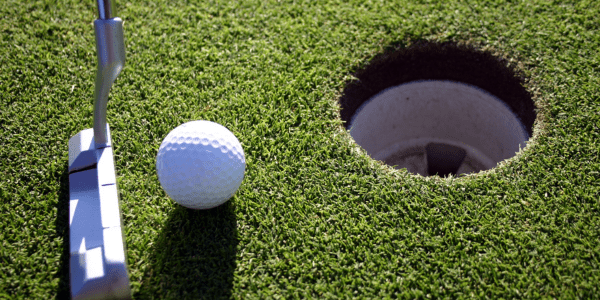
Your Mindset is Impacting your Putting
The yips is an involuntary muscle jerk or twitch that occurs midway through your swing or stroke. Not only do the putting yips affect your score, but they can also mess with your emotions and dominate your mind.
The impact of the putting yips doesn’t just appear when you step onto the greens. When you fear losing strokes due to yipping during putts, the pressure to hit the “perfect” tee and approach shots increases.
The pressure and anxiety of the yips affect your entire physical and mental games and your performance.
A golfer who responded to our Golf Mental Game Survey asked the following question about the yips:
“How can I think of the putt during competition as just another shot and not put increased pressure on myself? I never yip during practice, but they seem to appear as soon as I play a competitive round. How can I relax and stroke the putt without mental stress?”
Anxiety worsens the putting yips, and that anxiety often builds from the tee to the greens. When you fear putting, you will place more pressure on yourself to hit your drive straight and long down the fairway.
If your drive doesn’t lay in a favorable position, you will feel more pressure on your approach shot. You fear you won’t place the ball close to the pin as you line up your shot.
In your mind, being far away from the hole just means you will have more putt attempts and more putts to potentially yip. Anxiety prevents you from swinging the club freely, with the unintended consequence of ineffective and ill-placed shots leaving you farther away from the hole. Now faced with longer putts and increased anxiety, you yip more often.
Mindset Impacting Your Putting
When you become overly anxious and overthink to the point of distraction, easy skills become impaired, which further embeds the yips and throws your game off.
Recovering from the yips starts with lessening the pressure you place on yourself, improving your ability to manage anxiety, and physically relaxing your body.
While the yips occur in the present, they are exasperated by a focus on outcomes: the outcome of your shot, how it will affect your score, and how you will be seen or judged by others.
To lessen the pressure and anxiety, it is important to shift your focus from potential outcomes to the process of playing each shot.
Rickie Fowler was once one of the Tour’s steadiest putters. During his 2017 season, Fowler led the Tour in putting and finished the season at No. 7 in the world.
Unfortunately, the yips worked their way into Fowler’s game. At the 2024 Rocket Mortgage Classic, Fowler admitted he’s battling the putting yips.
During the depths of his yips struggles in 2021 and 2022, Fowler dropped to No. 185 in the world.
FOWLER: “I would say over the last few years I’ve dealt with a little bit of my right hand having a little bit of twitch at times, which you could call it some sort of a ‘yip,’ or there’s all kind of names for it. I’m fine saying it. When people have dealt with that, it makes it tough to trust hitting good putts.”
During the 2024 season, Fowler seemed to rediscover his putting stroke and climbed to 49th place in the world. What does Fowler attribute to turning his putting around and improving his game?
FOWLER: “I think a big part of freeing myself up and allowing myself to play better golf starts on the greens and it helps when I’m making putts, which last week started to see that. I feel like when I’m putting at least up to my standards or at least average, it kind of frees up the rest of the game. So looking forward to hopefully leaning on the putter a little bit more going forward and allowing the others to kind of fall into place and see the ball-striking stats come back up.”
Less pressure translates to less anxiety. Less anxiety leads to a freer swing, better putts, and an improved score.
The key to a smooth, free stroke is to free your mind of outcome thoughts so you can immerse yourself in just playing golf.
Use your pre-shot routine to transition from thinking mode to action mode.
Thinking occurs when you are lining up your shot and figuring out your strategy. As you immerse yourself in your pre-shot routine, you turn off the thinking phase and switch to performance mode, allowing you to swing the club freely.
Related Golf Psychology Articles
- How to Beat the Yips and Putting Anxiety
- Does Your Putting Change on the Course?
- Why the Putting Yips Show Up When It’s Important
- Subscribe to The Golf Psychology Podcast on iTunes
- Subscribe to The Golf Psychology Podcast on Spotify
Golfers Mental Edge Program

“The Golfer’s Mental Edge 2.0” is new in 2021. This audio and workbook program helps you overcome a lack of focus, low self-confidence or other mental game obstacles on the course that prevent you from reaching your true potential in golf. Learn the secrets to better focus, confidence and composure that Junior, Collegiate and Tour Professionals use to WIN!
“My confidence level has never been higher! I can’t tell you how clearly I was able to think during all four rounds of tour-school. The simple game plan you gave me really focused me. My confidence level has never been higher during a tournament. No matter how much pressure was on, I was able to control my thoughts and execute. Thank you, Dr. Cohn!”
~Patricia Baxter-Johnson, LPGA Tour